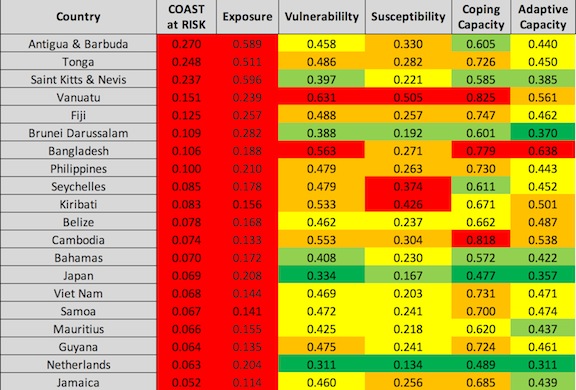Above: Antigua
By the Caribbean Journal staff
When it comes to the risks facing coastal nations, Caribbean countries are among the most vulnerable in the world, according to the Coasts at Risk index, which measures the risks such nations face around the world.
The Coasts at Risk Index, developed by The Nature Conservancy, the Coastal Resources Center and the United Nations University, assesses the risk of coastal nations exposed to natural hazards like floods, tsunamis and sea level rise, and where environmental degradation of coastal resources contributes to this risk, with two main factors: exposure and vulnerability.
Exposure is the likelihood of being hit by coastal hazards, while social vulnerability means the relative level of preparation (and resilience) for a given country.
For more information on coastal risks and the report, see the recent article by the Nature Conservancy’s Michael Beck in Caribbean Journal.
The nation with the greatest overall risk worldwide, combining exposure and vulnerability?
It’s Antigua and Barbuda, followed by Tonga and another Caribbean country, St Kitts and Nevis.
Of the top 20 nations on the Coasts at Risk index, seven are in the Caribbean, including Belize, the Bahamas, Guyana and Jamaica.
Other findings: the nation most exposed to coastal hazards was St Kitts and Nevis, while Haiti was the nation with the highest vulnerability.
See below for the top 20 countries in the world in the Coasts at Risk Index.

